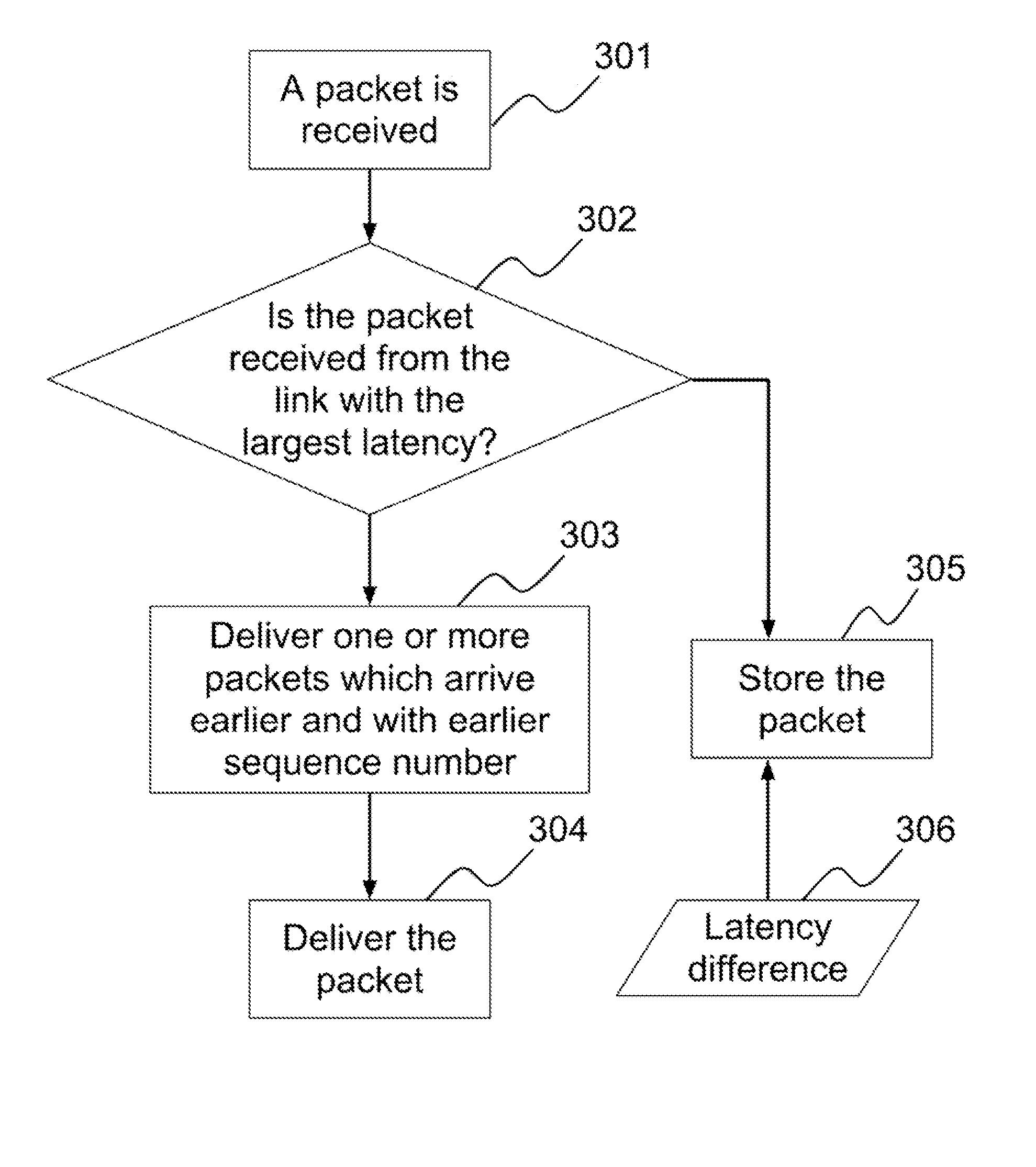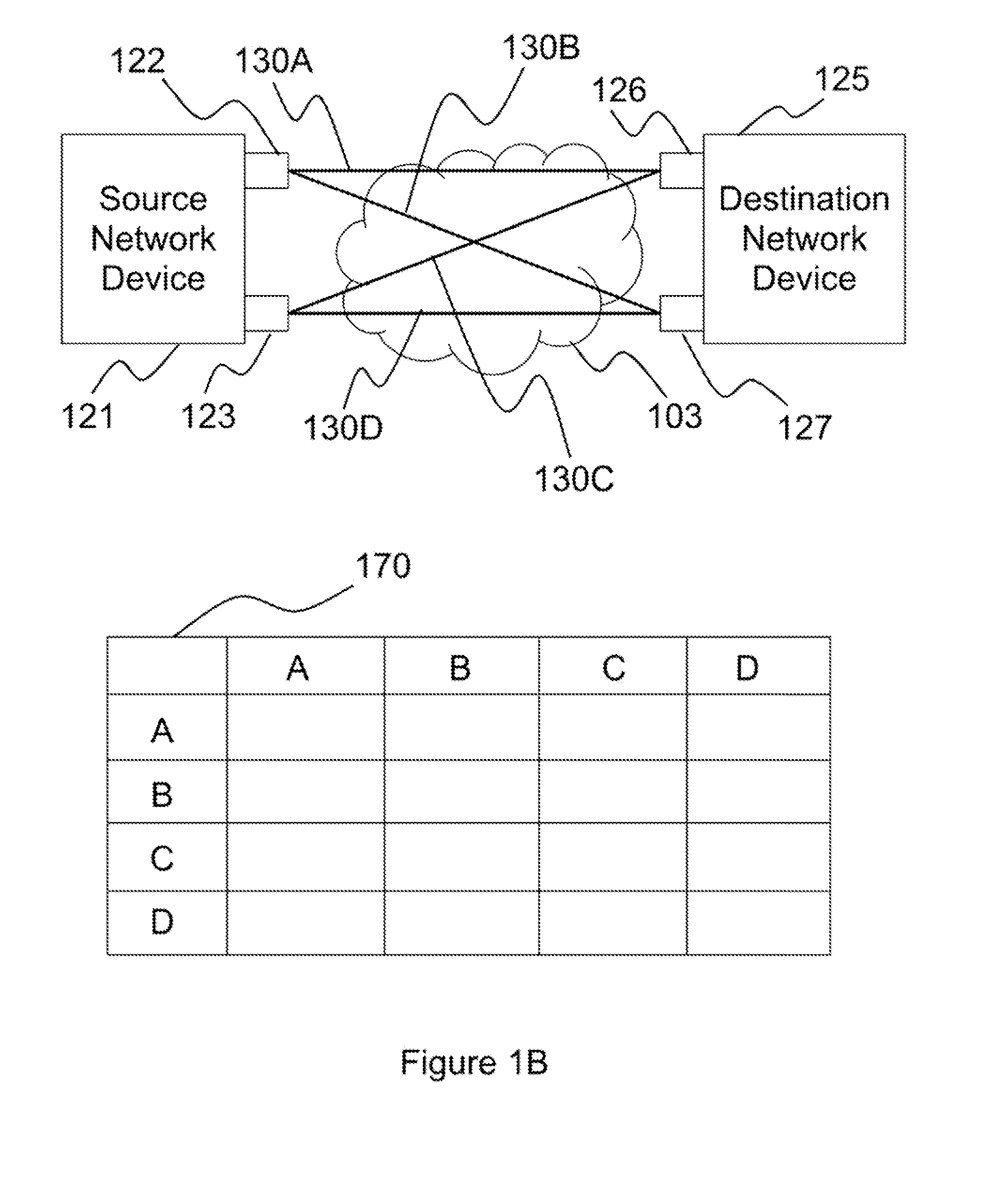Method and system for reduction of time variance of packets received from bonded communication links
a technology of bonded communication link and time variance, applied in the field of network communication, can solve the problems of packets may never arrive at the dnd, packets experience different delays, large time-variance and out-of-sequence packet delivery, etc., and achieve the effect of reducing time variance, less time variance, and high probability
- Summary
- Abstract
- Description
- Claims
- Application Information
AI Technical Summary
Benefits of technology
Problems solved by technology
Method used
Image
Examples
Embodiment Construction
Detailed Descriptions
[0023]Latency difference among bonded communication links is calculated by measuring the time difference of two packets, which are sent consecutively from a source network device, arriving at a destination network device through two of the bonded communication links. As these two packets arrive at the destination network device through two different links, each packet may arrive at the destination network device at different time due to different network conditions of these two different links and the time the packets leaving the source network device.
[0024]On the other hand, if consecutive packets are sent from the source network device to the destination network device through one of the bonded communication links, it is assumed that there is no latency difference between these consecutive packets because these two packets should experience similar network conditions.
[0025]As packets are continuously sent from the source network device to the destination netwo...
PUM
 Login to View More
Login to View More Abstract
Description
Claims
Application Information
 Login to View More
Login to View More - R&D
- Intellectual Property
- Life Sciences
- Materials
- Tech Scout
- Unparalleled Data Quality
- Higher Quality Content
- 60% Fewer Hallucinations
Browse by: Latest US Patents, China's latest patents, Technical Efficacy Thesaurus, Application Domain, Technology Topic, Popular Technical Reports.
© 2025 PatSnap. All rights reserved.Legal|Privacy policy|Modern Slavery Act Transparency Statement|Sitemap|About US| Contact US: help@patsnap.com



